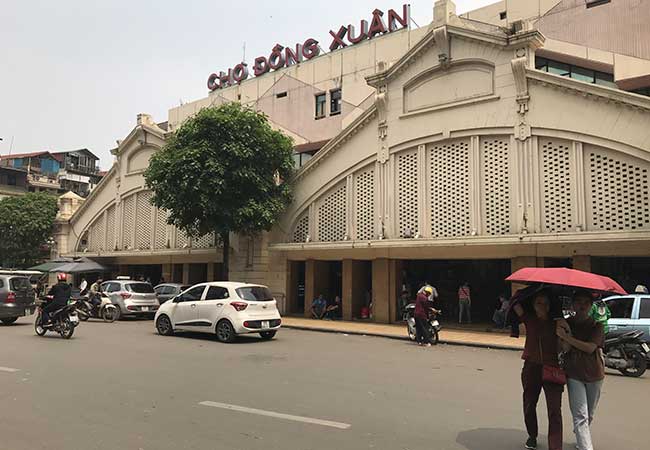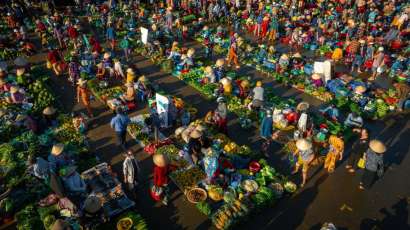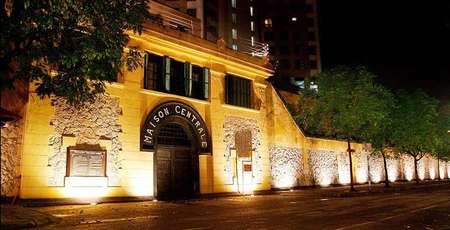
Unveil Hanoi Old Quarter
- on Apr 24, 2019 By: Ngoc Tu DINH
Hanoi old quarter is a common name for an ancient urban area of Hanoi located outside the imperial citadel of Thang Long. This urban area concentrates the population of handicraft and trade activities which forming the typical craft streets and separated traditions of urban residents.
Today, Hanoi old quarter is an attractive destination for those who want to learn about Thang Long, the ancient capital.
Location of the old quarter
Hanoi old quarter is located in Hoan Kiem district by the Red River. The south borders Hoan Kiem Lake, The west borders Thang Long citadel. The total of this area is about 100 ha.
There are 76 streets in 10 wards: Hang Dao, Hang Bac, Hang Bong, Hang Buom, Hang Gai, Hang Ma, Dong Xuan, Cua Dong, Ly Thai To.
Although the old streets are located outside this area, but this area still retains the characteristics of old town.

Hanoi old quarter location
History of Hanoi old quarter
This bustling residential and commercial area was formed during the Ly-Tran dynasty (the 10th century).
From Thang Long citadel to the bank of Red River, the residents from the villages around northern Delta gathered to this area to live, forming the busiest neighborhood of the city.
By the Le Dynasty (the 15th century), there were gradually a number of Chinese oversea came for trading and formed the China towns.
Hanoi handicraft streets
The most famous features of Hanoi old quarter is the craft streets. Craftsmen from craft villages around Thang Long imperial citadel gathered here, concentrating on each their area of their profession.
Nowadays, some streets still retain the traditional products such as Hang Ma, Hang Tre, Hang Thiec, Thuoc Bac…
Besides, although some streets do not keep traditional jobs, they also focus on selling a kind of goods such as Hang Quat for worship products, Hang Buom for confectionery, Ma May streets specializing in travel services…

Hang Dao street in Hanoi Old Quarter with clothes shops
Ancient house in the Hanoi old quarter
Another feature of the old quarter is the old house architecture in the downtown area. The old houses are mainly tube houses with included tile roofs. The houses are narrow in the front and long inside.
In the middle of the house are the air wells to make the houses bright and get fresh air. Most of them are shops and some are retained as relics. These houses were mostly built in the 17 – 18th century.
Relics in the Hanoi Old quarter
In the old town area, there are many old historical relics including Communal house, temples, pagodas and assembly halls.
Nowadays, you could visit Kim Ngan communal house in 42 Hang Bac Streets. Thanh Ha communal house in Ngo Gach alley, Yen Thai communal house in Tam Thuong alley, Ha Vi communal house in 11 Hang Hom str.
Temples: Similar to communal houses but to worship the heroes or the persons who have contributed to the village, country. You could find some as Ma May temples, Nhan Noi temple, Ba Chua temple, Bach Ma temple.
Pagodas: the place to worship the Buddha. In the Hanoi old quarter, there are still some pagoda such as Cau Dong pagoda, Kim Co pagoda, Thai Cam pagoda.
Assembly halls: The Chinese people came for trading and assembled the assembly halls: Guang Dong and Fujian guild halls (now is at 22 Hang Buom and 40 Lan Ong street)
Hanoi Old East Gate: In Hanoi old quarter, there were 4 gates. But today, only Hanoi Old East Gate exists.
Markets: Beside the craft streets, the old town also has some markets to focus on exchanging goods for life such as Dong Xuan Market, Hang Da Market, Hang Be market.

Dong Xuan Market in Hanoi Old Quarter
Some information for those who love Hanoi Old quarter to discovery the history, old architecture, culture and religion. How many places above have you visited?
Comment
Other Blog
Categories
Latest News
on 31 Dec, 2025
on 31 Dec, 2025
 Español
Español Français
Français




















Morgane Ter Cock
on Dec 18, 2025HerbertPhomaMS
on Oct 19, 2025Lilyan Cuttler
on Oct 15, 2025Avenue17XC
on Sep 14, 2025Avenue18JL
on Jul 21, 2025